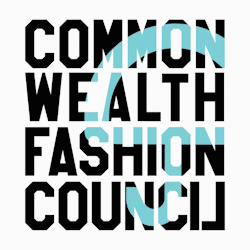The rise of fashion nfts
By Alanna Fairey
Commonwealth Fashion Content Editor
When the Novel Coronavirus (COVID-19) was first declared a pandemic by the World Health Organization (WHO) in March 2020, the world changed –– seemingly forever. Businesses were shut down, employees were required to work remotely, families and friends were not permitted to gather, and major events and shows were cancelled, all to remain compliant with physical distancing regulations and public health guidelines intended to prevent the spread of the virus.
While the pandemic brought about a number of tragedies and setbacks, COVID-19 also acted as a catalyst for innovative change for a plethora of diverse industries. The fashion industry was not exempt from this change.
In a year that saw the cancellation of in-person fashion events and an adoption of emerging technologies, several fashion brands and companies made the transition to digitization, with products ranging from the creation of innovations in smart garments, to bringing non-fungible tokens (NFTs) into the traditional world of luxury and couture.
Non-fungible tokens –– which are best described as a cryptographic asset created through blockchain –– swept the fashion industry during COVID-19. Although technology experts were already thinking about NFTs, Google Trend reported an interest in NFTs at the end of 2020 moving into 2021, which coincided with the rise of the pandemic. This trend remained steady throughout 2021, as sales of NFTs noticeably rose to about USD$10.7 billion in the third quarter from USD$1.3 billion in the second quarter.
NFTs are also making waves in the music industry. In a prepared statement earlier this month, Singapore-based start-up Ownft World announced a new metaverse project that includes Warner Music Group as a to create virtual celebrities that can appear in various digital media and tie a token’s value to an idol’s popularity. The project is expected to mint 6,888 NFTs for two-dimensional avatars based on human characteristics.
In a podcast with Business of Fashion, Ledger CEO Ian Rogers explains that the main way to think about NFTs is that it is comparative to a “real invention”. He further explains: “We also have digital scarcity without needing a trusted source in the middle. So, you could you could have this [NFT] and it could be kind of protected and provable, even if that company goes out of business”. Rogers then goes on to explain that purchasers have an exclusivity to this digital device and can prove that they are the owner of that object who can then decide if they will sell it to someone else or become a collector.
Employing NFTs in the fashion industry had been deemed a reputable way to connect with ideal consumers and build a loyal fan base of buyers, especially as big-name companies compete to enhance NFT fashion and build on innovative ways to be attractive to consumers.

embracing the change
Fashion brands –– especially in the luxury sector –– were quick to embrace and adopt NFTs and digital fashion as part of their overall brand identity. Proponents have asserted that NFTs’ rarity and ability to accumulate value has the capability to bring digital fashion closer to the physical world.
According to solicitor Mansour Mansour of Ronald Fletcher Baker LLP, a full-service law firm with offices in London, Manchester and Exeter, warns that the fashion industry needs to be aware of some of the legal ramifications of NFTs.
“NFTs are usually transferred by what is known as a “smart” contract,” Mansour said in an interview with the Commonwealth Fashion Council. “These contracts will not protect a creator or artist’s right to receive royalties if the royalty system on the blockchain is circumvented, which sadly can be done now.
Adds Mansour: “creators need to be very careful when creating NFTs to safeguard their rights.”
Mansour goes on to explain that there is a misconception that the NFT holds the IP of an artwork or piece of design like a handbag or piece of clothing; it doesn’t.
“Some creators, such as RTFKT, are supposedly creating smart contracts with actual linked legal contracts in the coding allowing the recipient to use the item of the clothing in the metaverse,” Mansour says. “However, the recipient doesn’t own the IP inherent in the piece of clothing –– so they wouldn’t be able to, for example; make a copy of the clothing in the real world to sell. There is a lot of confusion about this.
Concludes Mansour: “NFTs are a digital marvel but regulation has not caught up yet –– so there is a serious lack of legal protection for buyers, sellers, and creators.”

a new normal
Digital clothing fashion house The Fabricant sold its ‘Iridescence’ dress through a first-of-its-kind blockchain transaction for USD$9,500, giving the new owner of the NFT dress a 28-day window to provide a photo of themselves to the digital designers in order for them to custom fit the digital garments, which are then delivered as photos or digital adaptations. Purchased on the blockchain with a cryptocurrency, in turn, raises the notion that virtual fashion can be traded as a commodity.
In the case of The Fabricant and the Iridescence dress, the success came as a surprise to several proponents, because the initial reception of the fashion world was a blend of suspicion, hostility and curiosity, with some going as far as proclaiming that fashion will never be digital because of the absence of tactual sensation.
Speaking on the Electric Runway Podcast, The Fabricant founder Kerry Murphy explained that a number of people who had a cryptocurrency background did not perceive the launch of the Iridescence dress to be a milestone moment, but in the context of fashion it was substantial, because it was the first time “that actual digital-only assets can have value and be fashionable at the same time because I think that’s what’s missing.”
Focused only on digital designs, Murphy added that it was important for The Fabricant to create an impact on the industry itself through the Iridescence dress, as the transaction brought about a “newness” that had not yet been seen in the fashion industry.
While the dress was a turning point in the fashion industry, it was not without its criticisms. A point of contention for critics was the price that the dress sold for, as the Iridescence dress was perceived as a luxury fashion industry price for a dress that cannot be worn. Murphy observed that there had been a whole conversation around to how much money the Iridescence dress sold for, but there had been very little reporting in the media and in the brand’s communications strategy on the context that the dress sold for.
According to Murphy: “Because that’s also an interesting one because it was an auction and all the money went into charity to actually support other blockchain artists to do their blockchain art, but that’s been forgotten about in the equation. It’s just about ‘oh, a virtual only dress is $10,000 which is creating a lot of impact.’”
As the industry continues to move into a digital direction and experimenting with NFT offerings, The Fabricant is focusing on uniting consumers to digital fashion and reinventing fashion through technology. “A curious mindset is definitely needed because otherwise those industries are often not going to be able to help each other out, and I see now that we’ve been doing this so much, we talked to all the big tech companies and all the talking about fashion right now”
Every time a new technology emerges, it is difficult to predict whether or not a particular industry will be impacted positively by it. While the introduction of NFTs in the fashion industry is still a new concept and strategy, the fashion industry is just scratching the surface of the opportunities that digitization will be able to provide beyond the COVID-19 pandemic.

